Flowers that look like flames are not very common ones that are usually seen or get planted in every garden. These flaming beauties will make any garden a sight to be seen, and will attract plenty of butterflies and songbirds around!
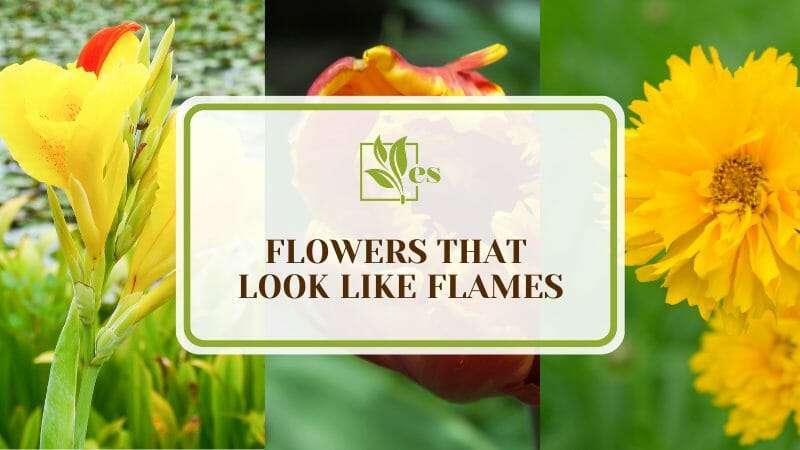
When it comes to these fire flowers, names sound like you’re about to get burned too. Whether you like them tall, small, luscious, or subtle – this list has them all.
JUMP TO TOPIC
List of Flowers That Look Like Flames
1. Lucifer Canna Lilly
As one of the best flaming flowers on this list, Lucifer Canna Lily, or fire lily, is a compact perennial flower sporting red and yellow striped flowers. It will also attract pollinators like butterflies and hummingbirds, which will have a very positive impact on the garden’s growth.
– Features
Creating a true fire effect in the garden, each stem of this spectacular flower bears five to six flower heads that will truly resemble flames dancing around. These blossoms grow atop the luxurious foliage of big green leaves. The flame flower will bloom from summer to fall and is a perfect addition to any garden bed or balcony.
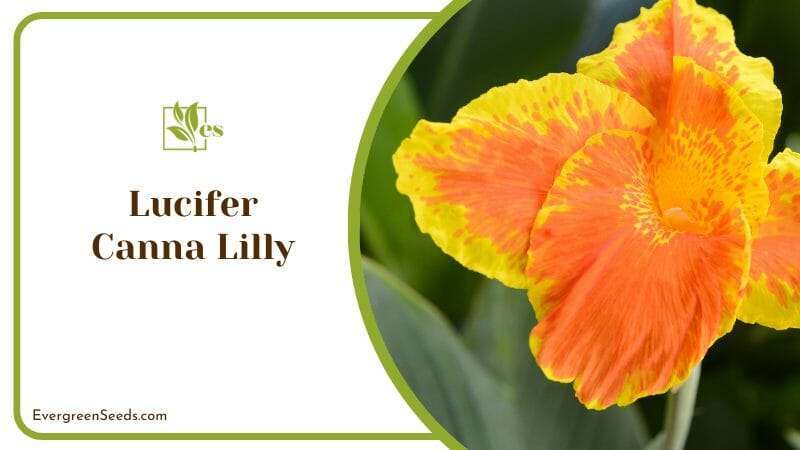
– Growth Requirements
This flower does best in full sun, although it will appreciate partial shade in the high afternoon. The fire lily will like to sit in rich, organic, and well-draining soil. They love to be grown in containers as well, where you can provide more controlled growing conditions.
– Problems
Lucifer Cannas are largely pest-free – in the US their only pest is the Canna leaf roller, but you should also mind beetles, caterpillars, and slugs which may try to eat the foliage, and this would be a pest issue that it can face throughout the blooming in the garden.
In addition, these lilies are highly sensitive to frost, and they’re only winter hardy in zones eight to 11, keeping them in this zone will avoid frost issues. In colder climates, you must dig the bulb before the winter and replant in spring.
2. French Parrot Tulip
The flaming parrot or the French parrot tulip is a whimsically magical flaming flower bearing red and yellow petals, with hues of crimson red on the edges.
If placed in the full sun, these large unusually colored flaming flowers will open up until almost flat – creating a real fire-looking scene in the garden. This perennial plant is easy to grow, and it will make a nice feature to flower beds, and borders, and can be grown in containers too.
– Growing Requirements
This flower likes a warm and dry summer and will benefit from being planted in groups. Plant them in loamy or sandy soil.
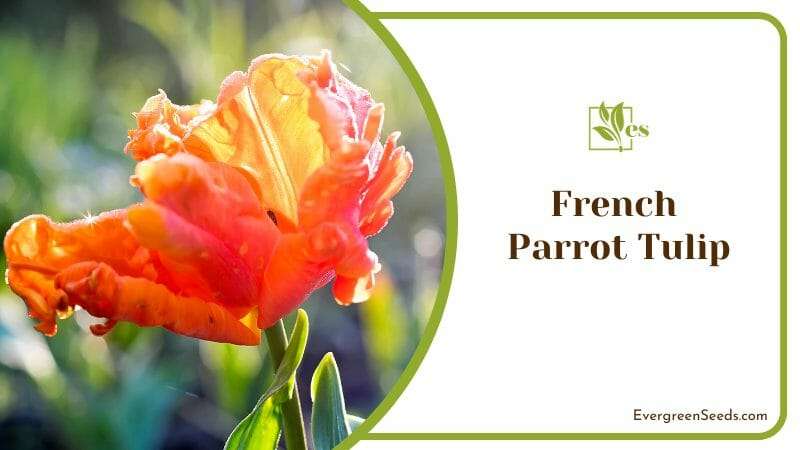
They’re fairly low maintenance and their water requirements are fulfilled by the falling rain. Plant Parrot Tulips in the fall for the bulbs to establish themselves and root over winter.
– Pests and Hardiness
French parrot tulips have no known pests or diseases bothering them, as they’re fairly hardy. They will attract only bees and butterflies.
Tulips by themselves are frost-resistant, which means if you live anywhere in the range of zone three to eight, you’re free to keep them in the ground over winter because they won’t get damaged in any way. Instead, as you wait for spring, they will bloom and thrive.
– Cautiousness
When you are keeping this plant, you must be cautious because pets like dogs or cats may be playful and intend to eat it, and they would be intoxicated because it is incredibly poisonous to them.
3. Gold and Bronze Coreopsis
This is a perennial with long bright gold and red daisy flowers, blooming from early summer all the way to fall. These fire flowers create a beautiful display in any garden.
– Advantages
The blossoms appear in large quantities, overshadowing any other flower on the flowerbed. This is a great ground cover plant as it has beautiful green leaves, resistant to mildew and fungi.
A perfect flame exposes for any perennial border or container plant mix, This accent plant looks spectacular in mass plantings, and this is a key benefit of having to plant these flowers.

– Growing Requirements
This plant is easy to grow and requires very low maintenance. It will enjoy full sun and medium moisture conditions of a well-draining soil mix. The flowers will even tolerate prolonged dry spells.
These flowers will indicate watering time, after which they’ll burst back to life. You can plant them in groups, as they won’t mind being squeezed together, that way producing a wonderful show.
Coreopsis flame flowers are incredibly hardy, as they’ll withstand the cruelty of winters from zone five to 10, and they will thrive when they are in these zones. On another note, are easily propagated during spring before new growth, and later on, in the spring season, they will start to bloom.
– Problems
As mentioned, this plant doesn’t attract many pests, however, their only known pests include slugs, snails, or crown rot which can indicate poorly draining soil, and they will live in the soil. As they live in the soil, they will cause degeneration of the flower, through the roots.
4. Gloriosa Flame Lilly
Gloriosa Carsonii or flame lily is the queen plant on this list. This is a deciduous plant bearing magnificent purple and yellow flowers, which dramatically weep downwards, creating an inverted flame appearance. These astonishing flowers bloom from late spring to fall, when they turn into seeds.
– Features
Gloriosa lily leaves are another astonishing feature of this plant. Each leaf is a unique piece on its own, curling and extending as far as it can to spin itself around another object or plant. The flame-looking flowers resemble butterflies or colorful parachutes, which will attract buzzing wildlife to the garden.
– Growing Requirements
Flame lily loves to inhibit a full sun area, sitting in richly fertilized and moist soils. You should plant them in early spring to ensure they take on for the season.
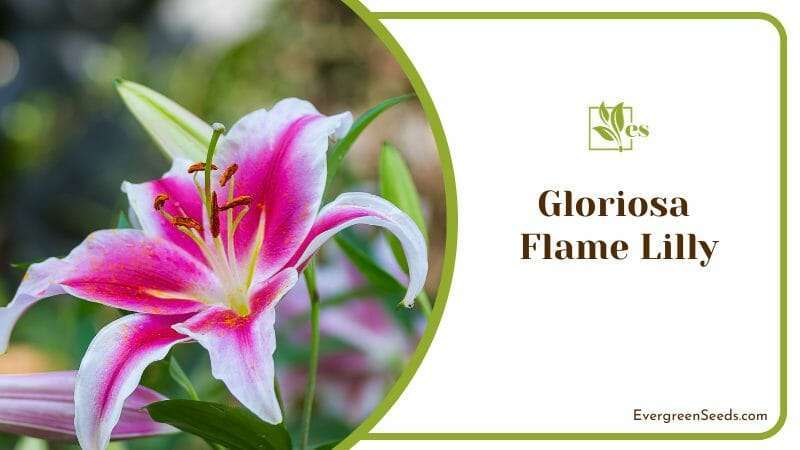
Much like orchids, they will benefit from being cut back, as parts of the stems will die with flowers falling off. Lastly, these flaming lilies love warm climates and will only survive in climate zones of eight and above.
– Problems
Flame lilies are toxic to animals, which makes them incredibly resistant to all kinds of pests. Overall, through this problem you should be aware and keep it out of your pet’s reach, in order not to intoxicate them.
Nevertheless, these plants are often attractive to wandering squirrels or cats, who dig them before the blooms appear. You should provide some protection before the plants establish themselves.
5. Celosia Flower
Celosia flowers are beautiful pollinator magnets, which will bring different bees and birds to your garden. They grow as upright perennials with beautiful bushy foliage and flame-like spiky flowers.
– Features
These attractive flowers begin to develop early in the year and change colors several times – they can start pink, go to purple, and transition to a reddish flame hue in the summer. Their ravishing blossoms will last through to early frost! A spectacular fresh-cut flower for your green border or a flower bed.
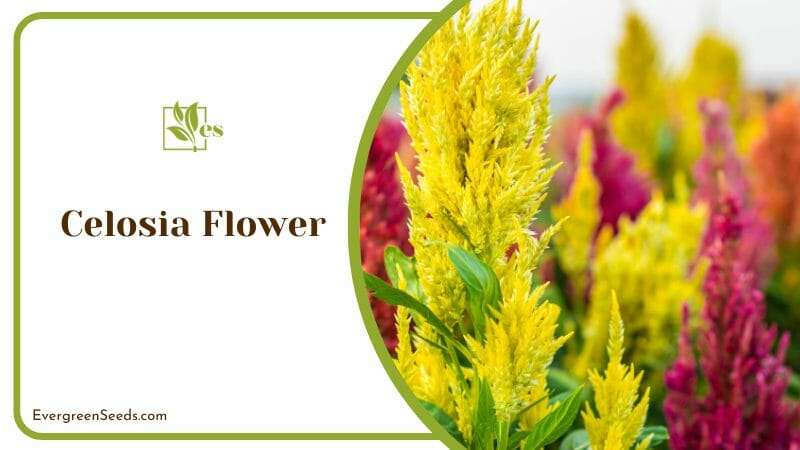
– Growing Requirements
Celosia flowers thrive in full sun and moist soils, however, on this note the soil mix should drain well. They will appreciate being fertilized often with a general liquid fertilizer. Once established they become tolerant to drought periods and heat waves.
Although they produce flowers year-long, they will only be hardy in the tropics and climate areas of 10 and 11. Nevertheless, you can grow them as annuals in colder climates.
– Problems
Celosia flame flowers have a few pestilence problems, so you should often inspect them for red spider mites, whiteflies, and aphids – especially if you grow them in a moist greenhouse.
6. Circus Rose
This bicolored flame flower has a yellow center and a strong red outside each petal – making this one of the most flame-like flowers on this list. The circus rose will put on a show in any flower arrangement in your summer garden. The blooms open up fairly large relative to other rose family plants.
This plant is native to California, making them extremely easy to grow across the US. They are also perfect for you to cut as present flowers, which will make them produce even more of their flame-like wonders. Its flowers will attract an abundance of hummingbirds and butterflies to your garden.
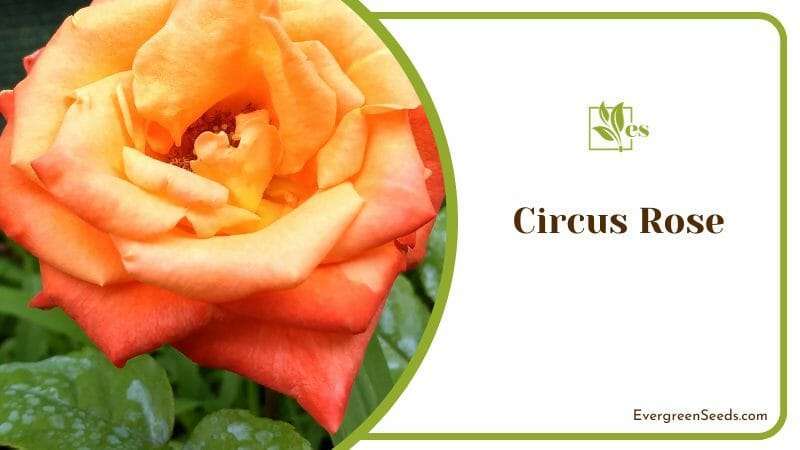
– Growing Requirements
The rose will grow vigorously throughout the year and will do best receiving full sun. They like to sit in average-medium moisture, fertilized soil with good drainage.
They will tolerate a variety of growing conditions, from droughts to cold winds, making them ideal to plant anywhere. These perennials are winter hardy too and can recover from winter in zone three fairly easily.
– Problems
Circus rose has similar ailments to your usual rose, but a general insecticide will probably help you resolve any potential issues.
7. Zinnia Elegans
Zinnia Elegans, more precisely its yellow flame variety, is a uniquely beautiful double-colored flower, hence it is called the “yellow flame.” Adored by birds and butterflies, they’ll attract liveliness too. They’re awesome to be cut back and placed in a vase to be admired in the house as well!

– Features
The rose center is adorned with yellow edges on each petal, creating a real fire appearance. As the development progresses, each flower gets a circle of small golden stars in the center, making it even more beautiful. These awesome flowers grow on top of luscious green foliage bringing freshness to your ground layers.
– Growing Requirements
These flowers are extremely easy to grow, requiring a nice sunny spot and moist, rich, and drained soil. They’re also drought tolerant and will require small amounts of water if the hot season passes without rain. Nonetheless, they’re incredibly frost-hardy and will thrive in climates of zones two to 11.
8. Indian Blanket Flower
Indian blanket flower is a famous US native plant. It has daisy-like petal heads, and a brown and red center with yellow tips, making it another awesome fire flower. This is an annual plant, blooming only for a short period – from late spring to late summer.
– Advantages
The stems are long and hairy with no significant foliage, so the blossoms will stand out! Their nectar-filled flowers will attract honey bees and butterflies. The birds love them for their seeds too!
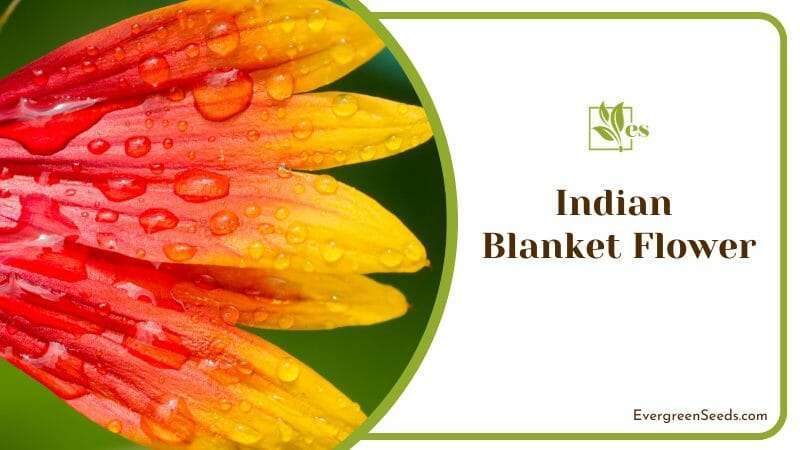
This vigorous bloomer is ideal for flower beds, containers, rock plantings, and even meadows, and lawns, hence the advantage in this is that you wouldn’t have to worry too much of it’s growing medium. The bountiful seeds the flower produces will ensure even more of these beauties next year.
– Growing Requirements
As they’re natively growing in meadows and prairies of the US, they’re incredibly easy to grow. Which means that they are incredibly winter hardy, and the seeds will survive winters in climates two to 11. They are heat tolerant and low-maintenance.
They enjoy full sun and dry to medium moist soil. If you fertilize the soil, you can ensure somewhat larger flowers. Being a native plant, the Indian blanket has no known pests or disease-related issues.
9. Carnival Dahlia
This elegant flower is adorned with bright red petals with creamy-yellow tips. These delicate blossoms stand on hardy stems which will stay upright even in the wind and rain. This Dahlia variety is sometimes also called ‘Festivo’ and it certainly lives up to the name.
– Growing Season
The Dahlias will bloom readily from early July up until the first frost, so they will be great for your autumn display as well. Due to their blooming ways, most people primarily use for flower beds and balconies, because they will keep on blooming for so long.
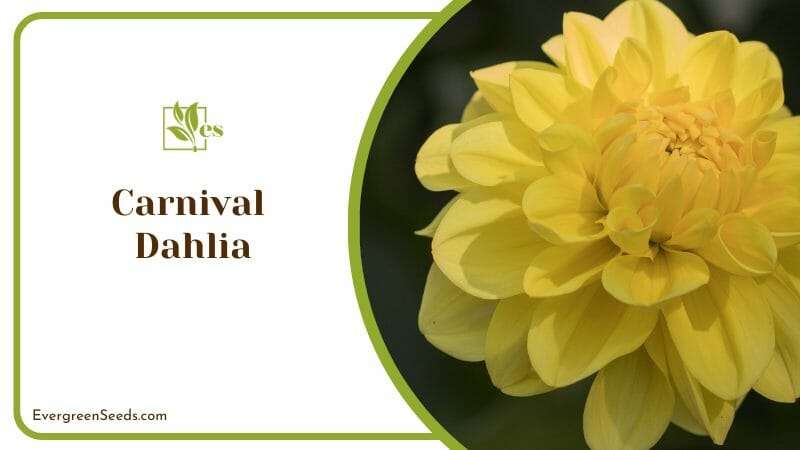
If you live in a colder climate which are zone two to seven, you would want to dig out the bulbs and store them in boxes to ensure they don’t die off in the cold. After the winter passes, you’re free to replant the bulbs for the upcoming growing season.
– Growing Requirements
These flowers enjoy full sun and partial shade. They will adore moist soil, which you should water several times a week during the summer. Dahlias also have a super-long vase life, as they can sit in a vase for weeks without wilting. You can use tap water without any problems, but for better results you should purify it.
– Cautiousness
Be careful, as they are toxic to animals, although most of them will probably curiously look at the beauty. When your pets consume it, you be cautious because it would intoxicate your pet, and this will lead it to different issues towards its health.
10. Fire Poppy
Fireball or simply fire poppy is our last guest on the list, but unique in its own right. The flowers feature papery red petals going to orange and yellow hues at the ends. This one will surely bring some noteworthy fire punch to your flower bed.
– Growing Season
The fire poppy gets the most attention during its blooming periods which will last all through the summer. The plant will go dormant after flowering, but the seed heads look equally interesting. The best time you can plant them is in the fall to give them a window to adjust to the soil and develop roots.
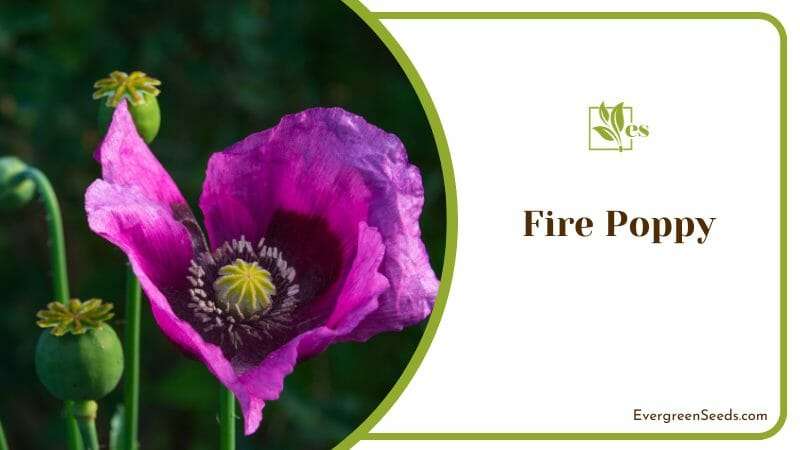
– Characteristics
Poppies have no known pests, although birds will love to come for the seed, and wild animals included. But this one will easily endure being bitten and eaten.
– Growing Requirements
They prefer full sun and a very light shade. Poppies will enjoy rich, fertile, and moist soils – your standard potting mix will suffice if you can make sure that it has a proper drainage. However, these poppies will have some issues with the summer heat and the humidity that comes with it, which is why they will do well in the range of climate zones, being hardy in zones two to 11.












